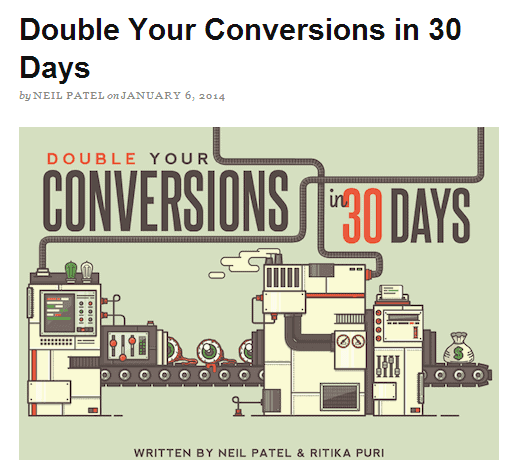We’ve been doing content long enough, we’ve figured some things out.
Like quality matters.
And long-form, “epic” content ranks better.
But we’ve also discovered that high-quality, long-form content isn’t enough. Because we don’t just want to rank in search engines. We also want attention.
To get results from our content, we need comments, shares, and engagement.
And of course, what used to work doesn’t always work now. So it’s important to pay attention to what your readers respond to, the types of content they like best.
Length, for example, is always a concern. Does epic-length content really get the attention we’re looking for?
And it might.
Trouble is, with so much content being produced, readers seem to appreciate a shorter read.
Then there’s the question of how in-depth your articles need to be—because high-quality posts usually cover less material, not more.
Yep, that’s right…
In-depth coverage of a narrow topic will always impress more than a loose, rambling article covering a broad topic.
Personally, I think this is one of the lessons that can turn a good writer into a great one. Even if you’re good at putting together sentences or have a flair with words, if you can’t make a strong point, your articles will feel like a waste of time.
No one will want to read them.
No one will share them with their followers.
To write better, learn copywriting
Copywriting is, hands down, the most important skill a marketer can have. And the best way to learn it is with AWAI’s Accelerated Program for 6-Figure Copywriting. Check it out today.
So back to our question: How do you create content that gets attention?
Some of it is just plain experience—you need to write a lot to find your voice and figure out what works. But some of it comes from paying attention. And the four tips I’m going to share with you now will help.
1. Keep your topic very focused
Pick a topic, then pick an angle. You can have a broad topic if you’re making one point about it.
For instance, don’t write about SEO. That’s such a big topic, you’d need 250 pages to cover it all. (And even in a book, you usually want to narrow your topic a bit. Say, SEO in an hour a day, or SEO for content marketers.)
Take the article you’re reading now, for instance. My topic is writing better articles. My angle is that tightening up your focus (less, not more) will make your articles better.
The secret is to work backwards. Think in terms of one powerful conclusion you want people to walk away with, then develop an article that takes them there.
2. Think like a tour guide
As a content creator, you’re like a bus tour guide. You’ve got to get your readers on board, then present one piece of your idea at a time, until they arrive at the destination you planned.
That’s why it’s so important that you know what your take-away idea is before you start planning or writing your article. As a content creator, you start there, then work backwards. Each section of your article is another bit of evidence or another step in the journey toward that idea.
Like a tour guide, you want to be able to say something revealing at each stop along the way. You want the entire trip to be fun and entertaining—even if you’re doing some teaching too.
And you only want to stop at significant ideas that relate to your core idea. You wouldn’t expect a stop at the cowboy museum on a tour of movie star homes. Your readers don’t want unexpected detours either. Stay on point, so you don’t lose their interest.
3. Go deep, not broad
Every section of your article must be worth reading. If it isn’t interesting, why go there? If it doesn’t contribute to your final point, it’s a waste of time. If you do want to mention it, go deep.
By including a point in your article, you’re saying it’s important to the topic you’re covering. So talk about it. Find statistics, quotations, or other interesting tidbits. Tell your readers something they didn’t know.
Don’t mention it and bounce to another point or rehash stuff they can find all over the Web. Go deep and you’ll keep them engaged.
By the way, if you don’t have time or room to deeply discuss your idea, either your topic is too broad, or you don’t know it well enough to write about it. Until you fix this, your article may not be salvageable.
4. Give them something new
Again, at all costs avoid recycling other people’s content. High-quality content is unique, either because you share a new idea, a new perspective, or a new way of solving a problem. You may make a serious topic funny or entertaining. But you must do something original.
Here are a few ways you can do that.

Here they are again…
- Share a radically new concept
- Go over the top with useful tips
- Expose a problem or industry secret
- Explain a new connection you’ve made
- Give a new tip for getting something done
- Share a revealing piece of research and what it means
- Provide a new solution to a common problem
- Give your insider’s perspective
- Share a juicy bit of gossip
- Make a forecast of what’s to come
- Attack a commonly accepted idea
- Support an idea others are attacking
- Respond to a serious subject in a radical or funny way.
Let’s Look at Some Examples
Humor while dealing with a serious subject
For a great example of turning something serious into something fun, see the Tutu Project:
Over-the-top usefulness
Neil Patel has set himself apart as someone who shares more in-depth, over-the-top useful information than anyone else out there. The screenshot above is a great example. Notice how narrow the focus, how useful the information, and how unique the presentation.
That’s high-quality content. And when you over-deliver like Neil does, you tend to get noticed.
Research + predictions
Now is the time of year when we see lots of prediction articles. The best combine relevant statistics with a futuristic interpretation. Here’s a good framework:
- Introduce a trend.
- Show a graph and other research to validate your observation.
- Follow that with your prediction.
It’s an easy-to-follow format that makes reading a pleasure.
Expose a problem (with a hint of gossip)
This example comes from Steve Olenski via Forbes. The title says it all: Content Marketing’s Dirty Little Secret. Makes you want to click, doesn’t it? And when you click through, you’ll enjoy the tone of the writing, which sounds a bit like Olenski is whispering from behind his hand.
Blog Posts That Get Attention
Now look back over the examples I’ve shared. Several of them combine approaches: research + predictions, exposé + gossip or insider info. All of them give you something unexpected or unique.
That’s the key.
People won’t read a mishmash of stuff they’ve seen all over the web already. But they’ll put everything on hold if you share something they can’t get anywhere else.
As a content creator, that’s your assignment: Do something new.
To write better content, you need to know the basics of copywriting. For that, I recommend is AWAI’s Accelerated Program for 6-Figure Copywriting.
This program gives you the foundation you need to do it right. Check it out today.






